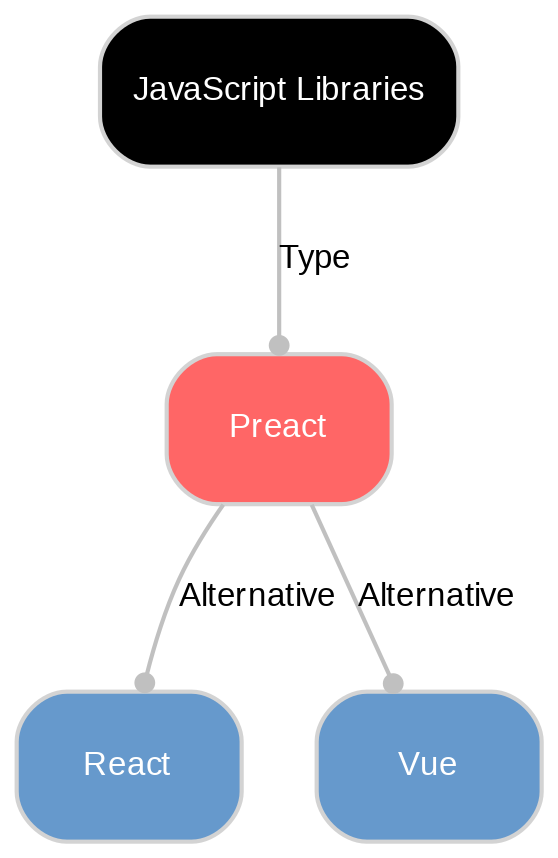Preact definition
Preact is a lightweight, high-performance alternative to React, enabling efficient development of user interfaces with less JavaScript and easy integration with other libraries.
What is Preact?
Preact is a fast and lightweight alternative to React, a popular JavaScript library for building user interfaces. Notably, Preact stands out due to its small footprint and high performance, making it ideal for quick browsing experiences. Unlike React, it can be used directly in the browser without any transpilation steps, reducing both download and execution times.
One of Preact's defining features is its focus on simplicity while offering a modern API for creating interactive user interfaces. It's designed with productivity in mind, providing developers more control over their code. Most importantly, Preact maintains compatibility with React components and tools, which facilitates an easy transition from React.
Preact aims to deliver efficiency and top-notch performance when building web applications without overwhelming the developer with unnecessary complexity.
Preact vs React: Understanding the Differences
While React is a popular choice for web app development, it has been critiqued as being slow due to its virtual DOM and large file size. This is where Preact steps in, offering a smaller and faster alternative. It's important to note that Preact does not aim to replicate every feature of React. Instead, it prioritizes simplicity, performance, and closely following the DOM specification.

Preact offers an additional advantage with its 'preact/compat' layer that ensures compatibility with existing React codebases. This allows developers to migrate from React to Preact without extensive rewrites or adjustments.
Preact also simplifies event handling, adhering closely to standard browser behaviors rather than trying to abstract them away. The result? A leaner library that addresses performance bottlenecks while still maintaining much of the familiarity and power of React.
Key Benefits of Using Preact
Preact provides several key benefits that make it an attractive choice for developers. First and foremost, its small size and high speed lead to faster loading times, leading to a more responsive user experience. This makes Preact particularly beneficial for web applications where performance is critical.
A prime aspect of Preact's appeal is its ability to integrate well with other libraries. This flexibility allows developers to leverage existing tools and frameworks in their projects, thereby enhancing productivity.
Perhaps the most significant benefit comes from Preact's compatibility with React. Thanks to this feature, transitioning from React to Preact can be a smooth process without major code rewrite or adjustment. Furthermore, the simpler API and less abstraction in event handling make working with Preact a straightforward affair.
Integrating Preact with Other Tools
Preact's flexibility extends to its compatibility with various other tools and frameworks. This adaptability opens up a world of possibilities for developers, making it possible to mix and match tools based on specific project requirements.
A key example of this can be seen in Preact's integration with Sanity, a structured content management system. This combination allows developers to create dynamic, data-driven applications by leveraging the power of Preact's user interface capabilities alongside Sanity's efficient handling of structured content.
Whether you're looking at front-end frameworks like Next.js or headless CMS tools like Sanity, Preact plays well with others and enhances the overall development experience. It simplifies the process of building powerful web applications while harnessing the strengths of various other technologies in your stack.
Explore Sanity Today
Understanding Preact is just the beginning. Take the next step and discover how Sanity can enhance your content management and delivery.
Last updated: